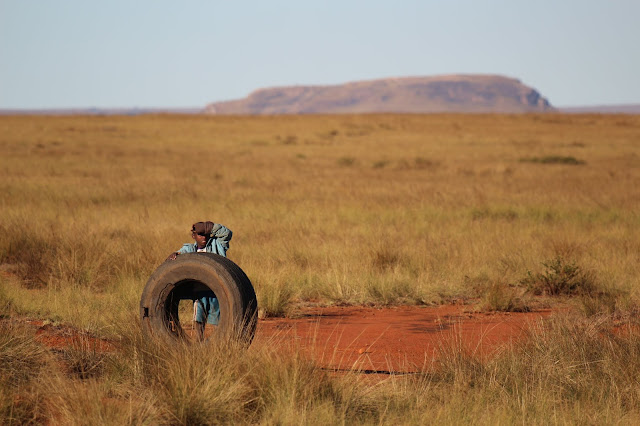Part One: Central Highlands
I gave myself a full month to explore Madagascar. When I first went through 'the book' and started writing down what I wanted to do and see, I was up to two months worth of travel before I had gotten very far. So the editing began.
I decided to break the trip down into three parts: the Central Highlands, a small part of the west coast, and Ile Sainte Marie on the east. I started in the Central Highlands.
The roads in Madagascar are dangerous. The main highway that runs south from Antananarivo is called the N7. It is narrow, winding, and has potholes aplenty. For this reason, most car rental places insist that you hire a driver with the car. I organized an 11 day trip through Madagascar Tour Guides. I actually had a driver and a guide for this part of my trip. Solomon, the driver, doesn't speak English or French, so Hube, an English speaking guide, came along for the ride.
The land is rich and arable. People in the highlands grow rice, wheat, corn, fruit, an incredible variety of crops. The people are ingenious and work SO hard. I saw men pulling wagons of produce, home-made carts with steering devices for moving goods up and down the mountains, 'machines' made out of scraps of wood and bedsprings for creating wooden art. The people here fix EVERYTHING. Nothing is wasted. Many of the people I met here speak at least 3 languages; Malagasy, French and English.
HOWEVER, Madagascar is plagued by corruption. The forests (including slow growth hardwoods like rosewood) have been ravaged, often with the blessing of the government, with the inevitable destruction of wildlife habitat, erosion, rivers destroyed by silt run-off. At least SEVENTY-FIVE PERCENT of Madagascar's population lives in poverty, 'surviving' on less than US$2/day. Only 65% of the population is literate. It is heartbreaking.
 |
| These men rent these rickshaws for about US$2.50/day. They operate purely on human power. A ride costs about 13 cents. The men need to have about 20 paying passengers during the day just to pay the rent. |
 |
Madagascar had a presidential election in November 2018. The man pictured on this t-shirt was the winning candidate. Prior to the election, helicopters were used to distribute t-shirts, scarves, and skirts emblazoned with his photo to villages in the countryside. Diabolical but genius. His likeness was literally plastered across the chests and backsides of people all over the country. When people went to vote, his was most likely the most recognizable face on the ballot. |
 |
| The main road goes through village after village on the way south. The road was always crowded with people, often going to market. Solomon would slow right down, toot his horn occasionally, and people would move out of the way. The biggest problem were the chickens and geese who didn't seem to realize that a two-ton vehicle was bearing down on them. |
 |
A house typical of the Merina people. They are very superstitious, so houses are oriented in specific directions. The North-east corner of the house is devoted to the ancestors. Windows and doors always face the west. |
 |
| The zebu is probably the most important animal in the lives of the highland people. It is a meat source, a labour source, it is sacrificed for special occasions, and is calculated in the bride-price. (My guide in Isalo National Park gave his bride's family the equivalent of the cost of one zebu when he married). Light coloured zebu are sacrificed for happy occasions like weddings, and dark-coloured animals for funerals. In the south, the Bara people are infamous as zebu rustlers. The zebu looks like a cow, but has a large distinctive hump on its back. This hump is fat, like the hump on a camel's back. The history of the zebu is mysterious. It may be a hybrid of animals brought by ancestors from Indonesia and Malaysia and Africa. Or it might just be the descendant of animals brought from Africa. |

 |
| This boy kept a close eye on me when I jumped out of the vehicle to photograph his zebu. |
 |
| This man is wearing the distinctive dress of the Merina people, the fedora and the blanket tossed casually over the shoulder. It was winter when I was here, and the people in the highlands consider it cold. I saw people wearing jackets and scarves, and one child in a snowsuit!!!! |
 |
| This gentleman designed and built this marqetry machine. Marquetry is the art of fitting different pieces of wood together to form a picture. |
 |
| Silkworms that live on these trees (called Tapia) are collected for Malagasy silk. |
 |
| The bark from this tree is used in a paper-making process |
































No comments:
Post a Comment